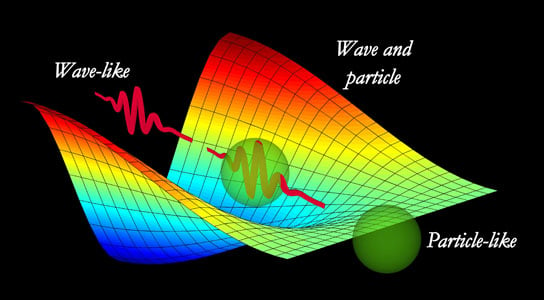
A photon can act as a particle one moment, following a well-defined path like a tiny projectile, and a wave the next, overlapping with its ilk to produce interference patterns, much like a ripple on the water. Wave-particle duality is one of the key features of quantum mechanics, and it’s not easily understood in layman’s terms. New experiments show that photons not only switch from wave to particle and back again, but they can actually hold both wave and particle tendencies at the same time.
A photon can run through a complex optical apparatus and disappear for good into a detector without being specifically a wave or a particle, assuming its nature only after it has been destroyed.
Scientists published their findings in the journal Science. Photons act as a wave or a particle only when they are forced to. As an example, if a photon is steered by a beam splitter onto one of two paths, each leading to a photon detector, the photon will appear at one or the other detector with equal probability. However, if the paths reconnect before going into the detectors, allowing the contents of the two channels to interfere like waves, the photon can demonstrate wavelike interference effects.
The two new studies implemented a stranger version of the delayed choice experiment. Each team used a quantum switch to toggle the experimental device. But in this experiment, the switch was not switched until the physicists had identified the photon in one of the detectors.
This forced the photon to behave as a particle or as a wave. The quantum switch allows the interferometer to hover in a superposition state. The switch determines the nature of the apparatus, whether the optical paths are recombined to form a closed interferometer, which measures wavelike properties, or remained separate to form an open interferometer, which detects discrete particles.
In both cases, the exact nature of the photon was only determined after the physicists measured a second photon. The fate of the first photon was linked to the state of the second photon, thanks to quantum entanglement.
In the presence of quantum entanglement, in which outcomes of measurements are tied together, it is possible to hold off making a decision, even if events seem to have already made one, states Seth Lloyd of MIT.
References:
“Entanglement-Enabled Delayed-Choice Experiment” by Florian Kaiser, Thomas Coudreau, Pérola Milman, Daniel B. Ostrowsky and Sébastien Tanzilli, 2 November 2012, Science.
DOI: 10.1126/science.1226755
“A Quantum Delayed-Choice Experiment” by Alberto Peruzzo, Peter Shadbolt, Nicolas Brunner, Sandu Popescu, and Jeremy L. O’Brien, 2 November 2012, Science.
DOI: 10.1126/science.1226719
1 Comment
Photons do travel both as waves and particles at a speed of ‘c’ , being the velocity of light, in the absence of any medium. Introduction of medium in between toggles the wave-particle to interact appropriately as interference (wave nature), Diffraction (corpuscular nature), Refraction (particle nature), Raman Effect of scattering (Particle nature), etc depending on the environment it gets through. In the cosmos with vacuum the travel would be predominantly as quantum or particles unless some interaction is called for. Louis De Broglie’s wave nature of matter is clearly understood in the electron microscope working as the infinitely small wavelength of matter, here being that of electron, makes it possible to probe into extreme small dimensions and throw a high resolution projection of microscopic world. In the genesis of highly unstable Pi mesons, Mu mesons and other generation II and generation III particles in a particle accelerator, for the smallest lifetime of those particles,the track in fact is a dotted line. The dashes relate to the existence of particle nature and blank intervals relate to the invisible wave nature. But these changes occur alternatively only for a femto second (10^-19 seconds). Thus the transmission until it dissappears happens only in wave and particle nature alternatively. The strong foundations of standard theory of particle physics is experimentally verified in this experiment. Thank You.